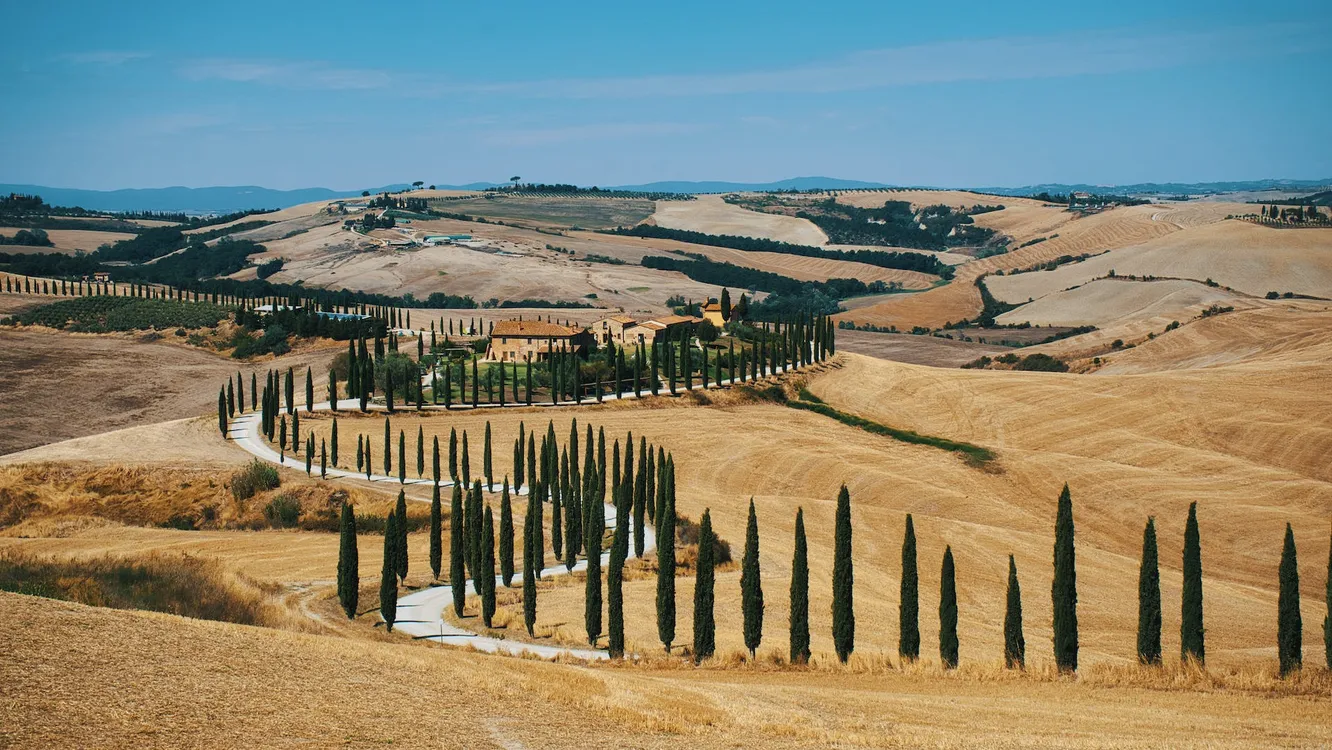Chianti vs. Chianti Classico: exploring the subtle differences between two great Tuscan wines

In the picturesque Tuscan region, the homeland of renowned wines worldwide, two labels stand out for their history and quality: Chianti and Chianti Classico. Both are produced in the same geographical area but possess distinct characteristics and regulations that make them unique. In this blog post, we will explore the subtle differences between Chianti and Chianti Classico, two wines that embody the essence and tradition of Tuscan winemaking.
Geographical origin
The first and foremost difference between Chianti and Chianti Classico lies in their geographical origin. Chianti Classico comes from the Chianti Classico zone, a more restricted and traditional region located between the provinces of Florence and Siena. This area is the historical cradle of Chianti, characterized by rolling hills, limestone soils, and ideal climatic conditions for viticulture.
Chianti, on the other hand, has a broader production area, including both Chianti Classico and other subzones designated as “Chianti.” These subzones extend further towards Pisa, Arezzo, Pistoia, and Prato. Therefore, Chianti Classico represents a smaller and selected portion of the entire Chianti region.
Grape composition
Another significant difference between the two wines concerns the grape composition used in their production. Traditionally, Chianti Classico is primarily produced with Sangiovese grapes, one of Italy’s most important native grape varieties. The law stipulates that Chianti Classico must contain at least 80% Sangiovese, with the remaining 20% potentially including other red grape varieties like Canaiolo, Colorino, and Merlot.
In the case of Chianti, the percentage of Sangiovese is lower than Chianti Classico, ranging from 70% to 80%. Additionally, Chianti can include a more diverse range of grapes compared to Chianti Classico, such as Cabernet Sauvignon, Syrah, or other international varieties. This greater flexibility in grape composition is one reason why Chianti may present a wider range of aromatic and flavor profiles than Chianti Classico.
Production regulations
Production regulations represent another distinction between the two wines. Chianti Classico is subject to stricter and more traditional rules than Chianti. For instance, the production area is more limited, agricultural and winemaking practices must adhere to specific traditions, and the wine must age for at least 12 months, with at least 8 months in wooden barrels.
For Chianti, however, regulations have been relaxed over the years to allow more flexibility for producers. The broader production area and less stringent criteria make Chianti a more accessible and versatile wine that can be produced in different styles to cater to a broader variety of consumers.
Organoleptic characteristics
Differences in regulations and grape composition also reflect in the organoleptic characteristics of the two wines. Chianti Classico tends to be more structured, with softer tannins and greater aromatic complexity. It may offer scents of ripe cherries, floral notes, spices, and subtle hints of aromatic herbs.
Chianti, on the contrary, can be a more fruity and fresh wine, with good acidity and a lively taste. Its aromatic profile can range from notes of red and black fruits to pleasant floral hints.
Gastronomic pairings: enhancing the flavors of Chianti and Chianti Classico
Beyond differences in production and organoleptic characteristics, a fundamental aspect to explore when discussing Chianti and Chianti Classico is their food pairing. Both wines are excellent companions for numerous dishes in Tuscan cuisine and Italian cuisine in general. Here are some gastronomic pairing suggestions to enhance the flavors of these two great Tuscan wines.
Pairings for Chianti Classico
Florentine Steak: Chianti Classico is famous for being the ideal companion to the renowned Florentine steak. The combination of soft tannins and fruity notes of the wine harmonizes perfectly with the succulent grilled meat, creating an unforgettable taste connection.
Pappardelle with Wild Boar: Another classic pairing is with pappardelle with wild boar, a typical dish of Tuscan cuisine. The robust and wild flavor of the boar requires an equally structured wine, and Chianti Classico meets this need with its complex aromatic profile and silky tannins.
Aged Cheeses: Chianti Classico pairs magnificently with a selection of aged cheeses such as Pecorino Toscano, Parmigiano Reggiano, or Grana Padano. The fruity and spicy notes of the wine balance the saltiness and complexity of the cheeses, creating a harmonious contrast.
Pairings for Chianti
Beef Tagliata: Chianti pairs beautifully with a beef tagliata, a simple yet delicious dish. Its freshness and acidity will cut through the juicy meat, cleansing the palate and preparing it for the next bite.
Tomato Pasta: The lightness and fruity character of Chianti go well with a tomato pasta, a simple yet flavorful dish. The red fruit notes of the wine perfectly match the sweetness of the tomato, creating a balance of flavors.
Margherita Pizza: An informal and delightful alternative is pairing it with a Margherita pizza. Chianti lends itself well to this combination, as its freshness and fruity taste complement the tomato base, mozzarella, and basil, creating a symphony of flavors.
Conclusion
In summary, Chianti and Chianti Classico represent two different interpretations of one of Italy’s most celebrated wines. Chianti Classico embodies the tradition and elegance of Tuscany, with limited and rigorous production. On the other hand, Chianti offers a greater variety of styles and a more flexible approach to production.
If you’re a wine enthusiast, it’s worth exploring both labels.
